Fairytale called Lake Titicaca
We went to Peru with a tour group at the end of November, at the beginning of the rainy season. We got lucky with the weather – there was no rain while we traveled around the country for two weeks.
Like many other people, I have read about Machu Pichu, high mountains, llamas, and potatoes in Peru. Somehow, I completely missed information about the famous mountain lake situated on the border of Bolivia and Peru. How could I have known that our itinerary included a fairytale called Lake Titicaca?
I wasn’t impressed with the description of this lake in the trip’s itinerary. Big deal: highest navigable lake in the world located at 12,507 ft (812 m) above sea level with islands on which the ingenious people still live. So what? What to get excited about?
The bus ride from Cusco to Puno
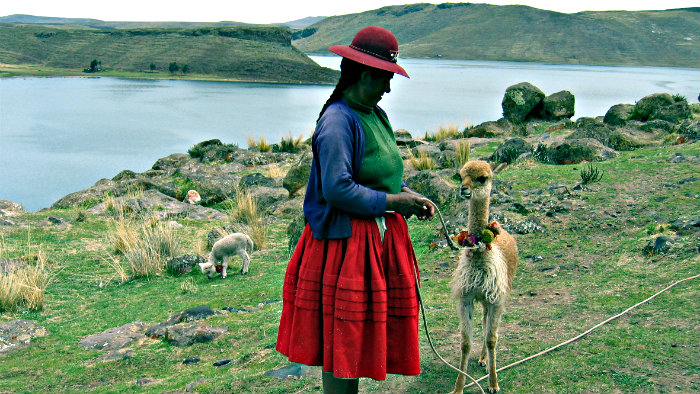
To get to Lake Titicaca from Cusco, we spent several hours on the tour bus. It was a long but enjoyable ride. The bus drove through the high planes. The views were incredible.
We saw lots of terraces in the mountains where people cultivate potatoes, the main vegetable in Peru (more than 4,000 varieties of native potatoes grow in the Andean highlands of Peru, Bolivia, and Ecuador).
We kept turning heads from side to side, trying to keep track of all llamas in the pastures. Along the highway, we saw colorfully dressed locals. The inhabitants of each village in the Peruvian Andes wear different kinds of traditional closing. Because of significant differences in temperatures between day and night, they wear lots of vibrant layers – shawls, embroidered skirts, capes, hats.
The tour guide brought our attention to the bands on women’s hats. Their color indicates
Unfinished houses
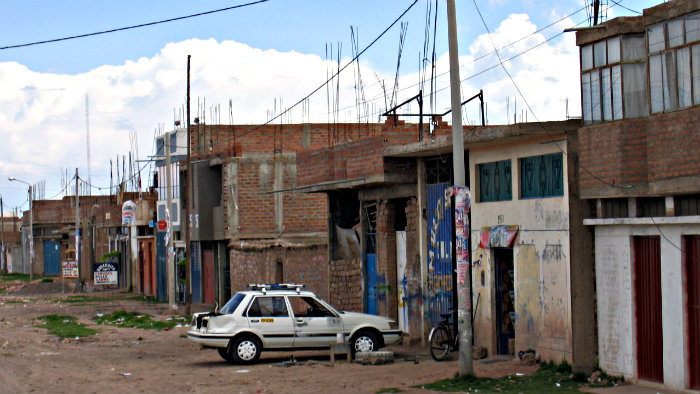
As everywhere in Peru, we saw houses made out of clay, with the unfinished second or third floors. These buildings had long vertical metal rods, which were sticking out from the top. We asked the tour guide about these strange-looking, unfinished dwellings. He said that the government could not charge a property tax on the unfinished building.
To make their houses look unfinished and to avoid paying property taxes, families start construction, finish the first or second level, move in, and pretend that they ran out of money to complete the structure. They don’t mind that their houses with long metal rods instead of a roof look dreadful.
We stopped at the marker indicating the highest point on the road, over 14,000 feet above sea level. After a few hours of sitting it was nice to get off the bus to stretch our legs. Some people from our group immediately ran to the vendors selling tourist stuff spread on big blankets. My husband and I just walked around. It was freezing and windy. We could see snow high in the mountains.
Hotel in Puno
We arrived at Puno, a port town on the shore of Lake Titicaca. The main square looked like any other main square of the South American city: large plaza with a cathedral. It is always called Plaza de Armas. It is filled with shops and restaurants and is the most popular area for the locals and tourists.
Finally, we arrived at our hotel Sonesta located on the lakeshore. It was a few miles away from the center of Puno. The view from this hotel was superb – the lake and mountain peaks behind it. Our room was on the first floor. From the window, we could see the beautiful green lawn, a couple of llamas “mowing” the grass, and the lake.
The hotel restaurant where we had breakfast and dinner had the same gorgeous view of the lake. We were surprised to find out that this hotel had only three stars. Everything about the property, food, sights, service was outstanding.
Altitude sickness
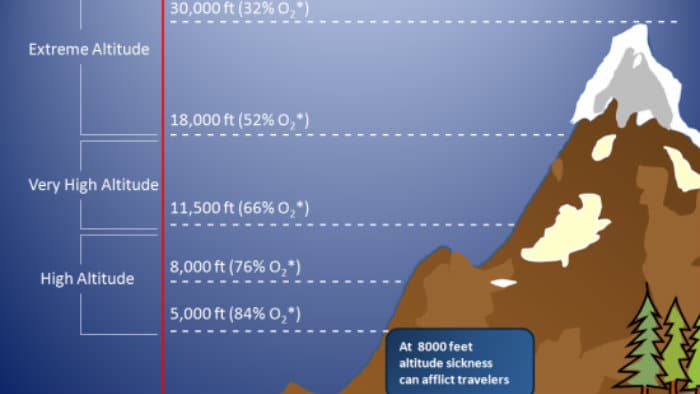
As in all other hotels in Peru, the first thing we saw in the lobby was a platter with Coca leaves. Tourists are advised to drink Coca tea or just chew dry Coca leaves to help fight altitude sickness.
By that day we already chewed many ounces of these dry leaves. However, at this altitude, the Coca leaves did not help us that much. By the evening, all the
My husband and I felt a slight headache which wouldn’t go away. It was dull and constant. Even after taking some Tylenol we couldn’t get rid of it. It is understandable – to get to Lake Titicaca in one day, our bus took us from Cusco (9,000 feet) to Puno (12,000 feet). Our bodies were not able to adjust to such quick change in altitudes (fortunately, it was the only unpleasant aspect of visiting Lake Titicaca).
Despite a headache, we went for a walk
What were we doing
The magic started next day

In the morning we boarded a boat to see the islands. After an hour of gliding on the placid water, I noticed something very unusual on the horizon. A small golden village from the fairy tale was rising from the lake.
As we were getting closer, I could see islands with golden houses and fanciful golden boats moored next to the shore. Where did they get all this gold? Only when we reached the first island, we could see that everything there was made out of reeds: houses, boats, even the island itself.
As I mentioned, before a trip to Peru I did not read the information about floating islands of the Uros people. In a way, I am glad that I missed this info. I was completely surprised by the sight of these islands and felt like I was dropped in a fairy tale!
Uros people
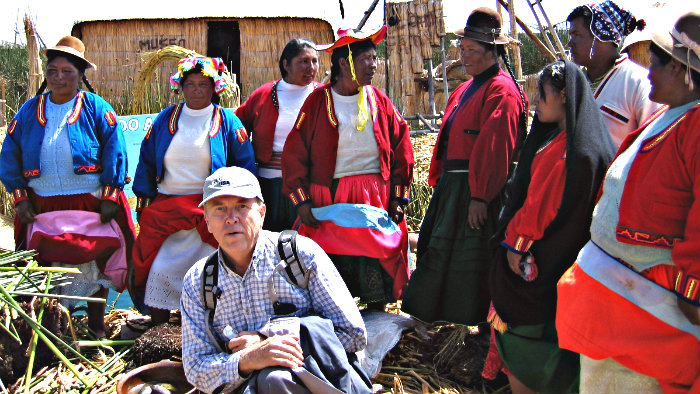
Colorfully dressed men and women met us with the song and dance. We were brought to the center of the island where the local guide told us about the life and customs of the Uros people.
We learned that they lived on Titicaca Lake for hundreds of years. They moved to the floating islands after the Incas invaded their land. Uros people used the mobility of the islands as a defense mechanism.
These days, Uros people live on forty two self-made floating isles, built from reeds. They collect them along the edges of the lake. The islands are four to eight feet thick. The reeds gradually disintegrate from the bottom of the islands, and the residents add more reeds on the top of soft and spongy “ground.”
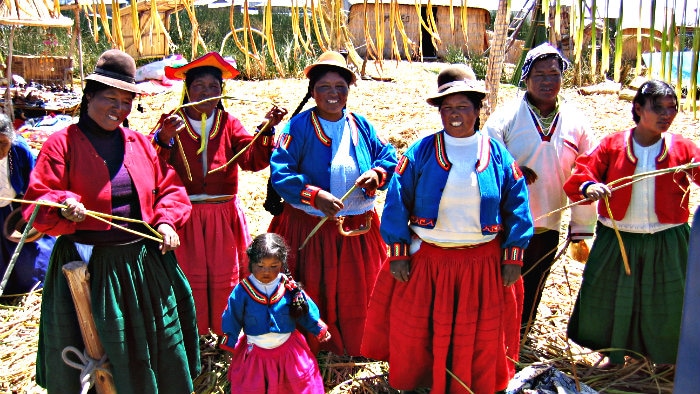
We noticed that all island dwellers were short and a little heavy, even the young women. Their ankles looked swollen. A man from our group, a retired physician, asked for permission to touch women’s ankles. His diagnosis: water retention. People lead a very sedentary lifestyle on these islands – they have literary nowhere to go!
They spend the majority of time sitting and weaving rugs and souvenirs – little boats, dolls, bags – everything from the reeds. For their tiny vegetable gardens, they use the soil brought from the mainland. They raise Guiney pigs in small pens (a delicacy in Peru, Ecuador, and some other Latin American countries); some families have a few chickens.
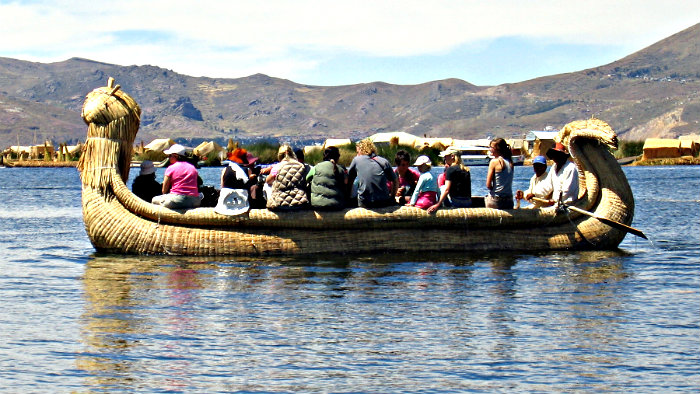
We saw other tour groups getting a ride in the traditional reed boats shaped like canoes, with puma heads at the prow. Unfortunately, such adventure was not included in our itinerary. We came from the hotel to the islands by a regular boat. It accommodated our whole group comfortably, but had “no character.”
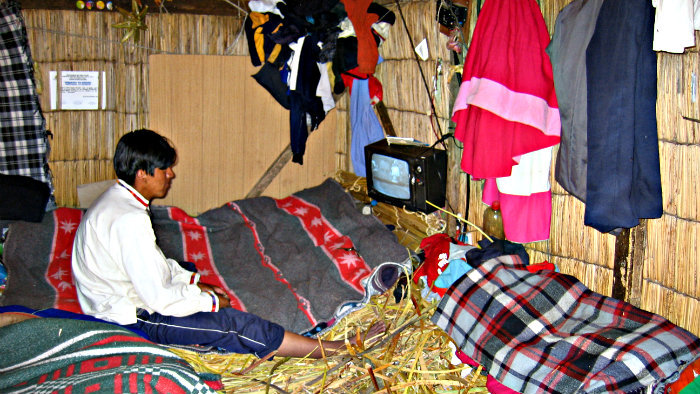
We spent a few hours with Uros people, learning about their life on the lake. Finally, it was time to say goodbye. As we were moving farther and farther away, I kept looking at these fairytale islands as they were growing smaller and smaller. I felt that I just visited some fantasy world!
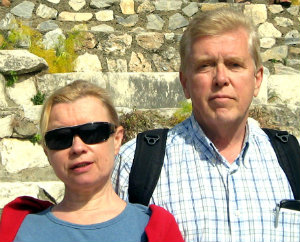

Recent comments